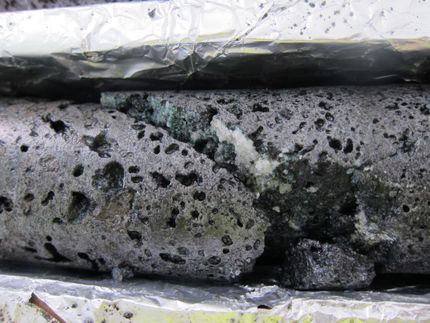Anthropogenic nitrogen plays a double role in climate change
Increased nitrous oxide emissions from fertilised soils offset climatic benefits from carbon sequestration
Advertisement
Human nitrogen additions to the soil may reinforce the greenhouse effect. Nitrogen additions tend to boost plant growth, so that terrestrial ecosystems absorb more carbon dioxide from the atmosphere. But recent studies have shown that they also stimulate nitrous oxide release from the fertisilied soils – a much stronger greenhouse gas than carbon dioxide. According to a new paper by researchers around the team of Sönke Zaehl from the Max Planck Institute for Biogeochemistry, nitrogen's detrimental effects on the climate roughly correspond to its climactic benefits. In fact, the scientists' findings suggest that the negative impacts of nitrogen may even slighty prevail.
Human activities have more than doubled nitrogen inputs to the terrestrial biosphere since the 1860s through increased atmospheric nitrogen deposition and the application of fertilizers in agriculture. Nitrogen is an essential nutrient for plant and microbial growth, and one of the key limiting nutrients in many natural ecosystems. But anthropogenic perturbations of the nitrogen cycle through the additions of fertilisers are known to affect the terrestrial sources and sinks of greenhouse gases such as carbon dioxide (CO2) and nitrous oxide (N2O), better known as "laughing gas". An international research team lead by Soenke Zaehle, researcher at the Max Planck Institute for Biogeochemistry, has now determined the magnitude of such effects on the two greenhouse gases.
“When added to nitrogen-limited ecosystems, it [nitrogen] can stimulate plant growth and/or suppress soil respiration, thereby leading to increased ecosystem carbon storage” explains Sönke Zaehle. However, there are also potentially negative consequences for adding nitrogen to ecosystems, as increasing nitrogen availability may enhance nitrogen losses from ecosystems, and eventually even have damaging effects on plant health. Particularly relevant for climate are elevated emissions of nitrous oxide, a long-lived greenhouse gas that is emitted from fertilised fields, as well as nitrogen-rich forest and grassland ecosystems.
Carbon dioxide and nitrogen cycles are strongly coupled
Drawing on reconstructions of past and present anthropogenic nitrogen deposition and fertiliser applications, Sönke Zaehle and colleagues used a global computer model of the coupled terrestrial carbon and nitrogen cycles to better understand the consequences of this anthropogenic nitrogen perturbation for the climate system. Their results confirm that the anthropogenic nitrogen perturbation has profoundly affected terrestrial carbon dioxide and nitrous oxide fluxes. Human nitrogen additions are the principle cause for the increase in terrestrial nitrous oxide emission since 1960, and contribute to about one fifth of the current global net carbon uptake (1996-2005).
Sönke Zaehle and colleagues then determined the effect of anthropogenic nitrogen on the atmospheric concentrations of the greenhouse gases CO2 and N2O, and assessed the resulting consequences for present-day climate. The key finding is that the climatic effects of the anthropogenic nitrogen perturbation from both gases are very substantial but of opposite signs. The cooling effect due to enhanced carbon uptake of the terrestrial biosphere is more than compensated for by the warming effects from enhanced terrestrial N2O emissions.
However, “the fact that in our study the N2O effect appears stronger than the CO2 effect should not be over-interpreted” cautions Zaehle. Rather, the study highlights the relevance of anthropogenic nitrogen in the climate system and the need to consider the effects of carbon and nitrogen cycling jointly. “I hope that this study fosters further research to better understand the effects of human N on ecosystem dynamics through joint observational and modelling studies”, Zaehle adds.

























































